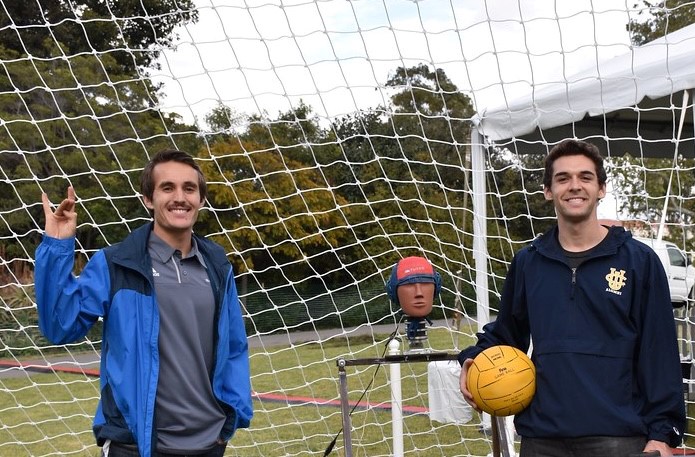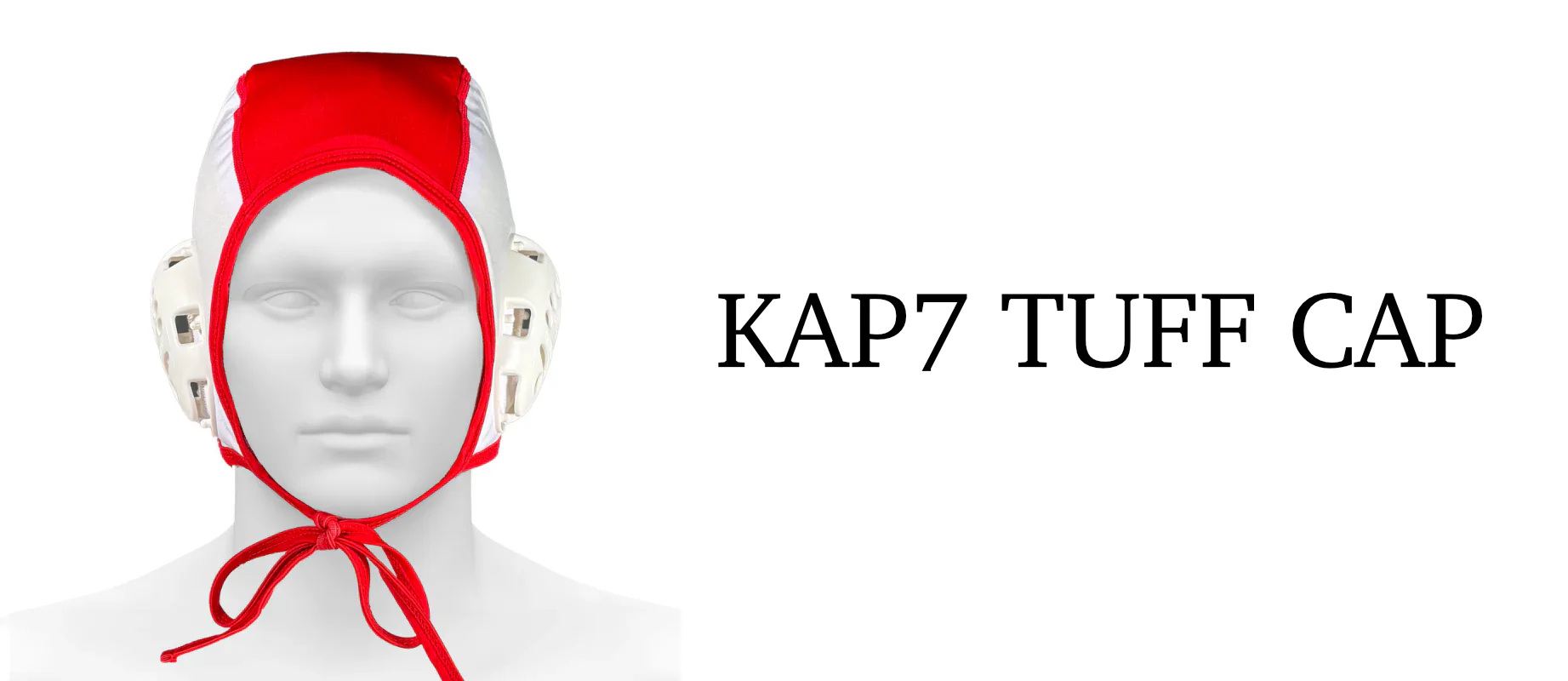
Nov. 5, 2025 - Two UC Irvine mechanical engineering alumni have partnered with the U.S.’s largest water polo gear manufacturer to launch the first game-legal protective headgear for water polo players. KAP7’s Tuff-Cap provides advanced impact protection in the pool without sacrificing performance or comfort for the wearer.
Nick Cecchi ‘17 and Theophil
“The injury fueled my motivation to get involved in traumatic brain injury research,” said Cecchi, who served as president of the UCI club water polo team. “TJ and I both love sports and figured we could use our engineering backgrounds to identify a solution and improve player safety.”
They developed a headgear test method specific to water polo and conducted the first ever study on the efficacy of water polo headgears. They set up their testing system on the recreation fields, behind the Anteater Recreation Center. With the UCI soccer team’s ball launcher, they launched
“We found that in testing specific to water polo, protective headgear could significantly reduce head accelerations associated with concussion risk by about one third on average, compared to traditional headgear,” said Cecchi.
Their research was published in 2019. One of the headgears tested was a prototype of the Tuff-Cap. Traditional water polo caps are made from only a thin layer of fabric and plastic ear pieces, serving as a head-worn “jersey” displaying team colors and player numbers without offering head protection from impacts. The Tuff-Cap is designed to look and feel just like a traditional water polo cap, but with added protection from a high-tech impact-absorbing material. Cecchi and Oros thoroughly evaluated various materials, focusing on finding one that could effectively dissipate impact energy while remaining durable in an aquatic environment, including prolonged exposure to chlorinated water and sunlight.
“We also prioritized minimizing water absorption to prevent added weight during use,” said Oros. “Ultimately, we identified Poron XRD as the best fit for the application.” The extreme impact protection material is used in a wide variety of protective gear for sports such as football and hockey. This is the first time the technology has been incorporated into a water polo-specific design, which has unique demands due to the aquatic environment.

“Most padded headgears on the market are bulky, uncomfortable, and not designed specifically for water polo. With the Tuff-Cap, players get the best of both worlds — the familiar fit and performance of a traditional cap combined with advanced impact protection,” said Oros. “We believe this will make adoption of the cap an easy decision for players at every level.”
Cecchi says the project likely would not have happened without UCI’s collaborative, multidisciplinary environment. After the two worked with Professor Hicks to study how head impacts and concussions occur in water polo players, Hicks introduced them to Reinkensmeyer, who mentored them through evaluating protective equipment specifically targeted toward water polo head impacts.
Reinkensmeyer said that working with Nick and TJ as they learned to conduct a rigorous biomechanical research study was a pleasure. “They showed remarkable initiative and perseverance, from the first idea for the experiment all the way through to publishing their results,” said Reinkensmeyer.
The engineering alums said that their experience at UCI provided a foundation for them to conduct rigorous research targeted toward solving real-world problems. They both went on to pursue doctorates. Cecchi dived into concussion biomechanics and helmet research at Stanford University and now works for a startup company called SoftShox, which is advancing helmet technology. Oros says his passion for materials began in his undergraduate materials science class at UCI, and the water polo cap research project sparked his enthusiasm for innovation. “Both experiences were important in shaping my path and ultimately led me to pursue a Ph.D. in materials science. I’m now in the final year of my doctoral program (at USC).”
Not only did the two graduate from UCI prepared for a successful career and inspired to continue doing impactful research, they walked out with a life-long friendship. “We became best friends through the experience of working together on this project and completing our mechanical engineering degrees together,” said Cecchi. “We were even the Best Man in each other’s weddings!”
– Lori Brandt
